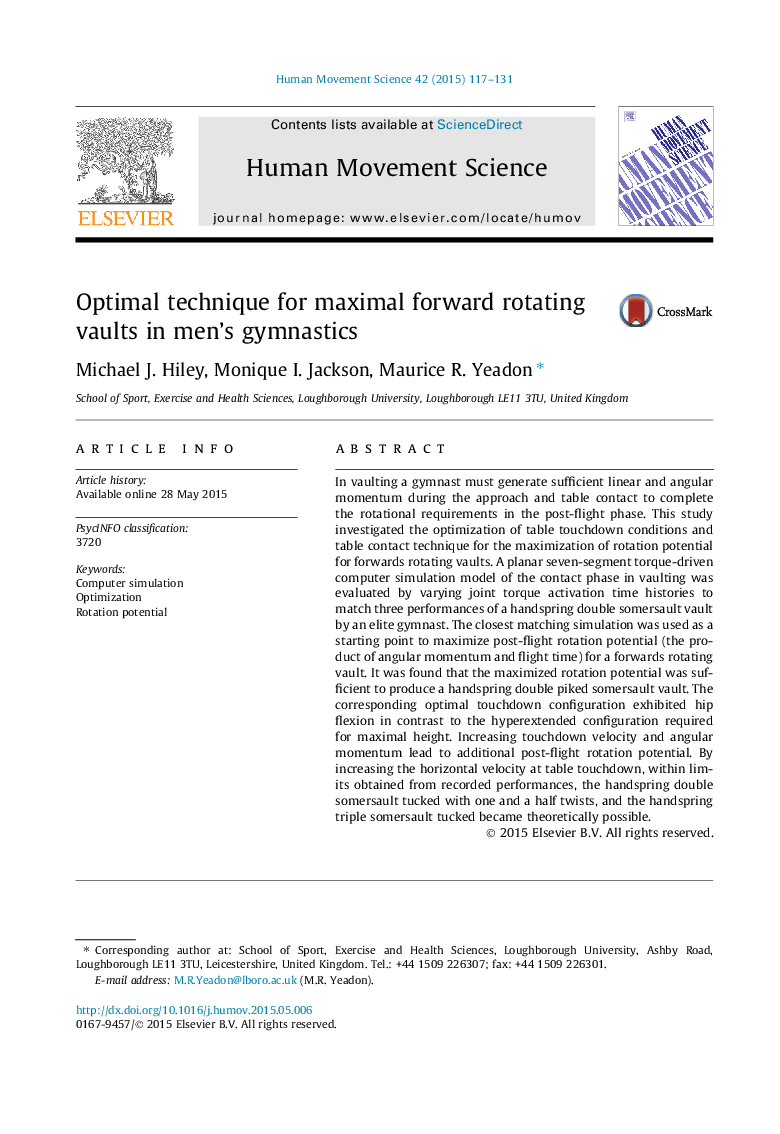| Article ID | Journal | Published Year | Pages | File Type |
|---|---|---|---|---|
| 928235 | Human Movement Science | 2015 | 15 Pages |
•Technique in handspring forward somersault style vaults was optimized for rotation.•Increasing horizontal approach velocity leads to increased rotation potential.•Optimal touchdown configuration for maximal rotation potential exhibits hip flexion.•The handspring double somersault tucked with 1½ twists is a limiting vault.•The handspring triple somersault tucked is a limiting vault.
In vaulting a gymnast must generate sufficient linear and angular momentum during the approach and table contact to complete the rotational requirements in the post-flight phase. This study investigated the optimization of table touchdown conditions and table contact technique for the maximization of rotation potential for forwards rotating vaults. A planar seven-segment torque-driven computer simulation model of the contact phase in vaulting was evaluated by varying joint torque activation time histories to match three performances of a handspring double somersault vault by an elite gymnast. The closest matching simulation was used as a starting point to maximize post-flight rotation potential (the product of angular momentum and flight time) for a forwards rotating vault. It was found that the maximized rotation potential was sufficient to produce a handspring double piked somersault vault. The corresponding optimal touchdown configuration exhibited hip flexion in contrast to the hyperextended configuration required for maximal height. Increasing touchdown velocity and angular momentum lead to additional post-flight rotation potential. By increasing the horizontal velocity at table touchdown, within limits obtained from recorded performances, the handspring double somersault tucked with one and a half twists, and the handspring triple somersault tucked became theoretically possible.
